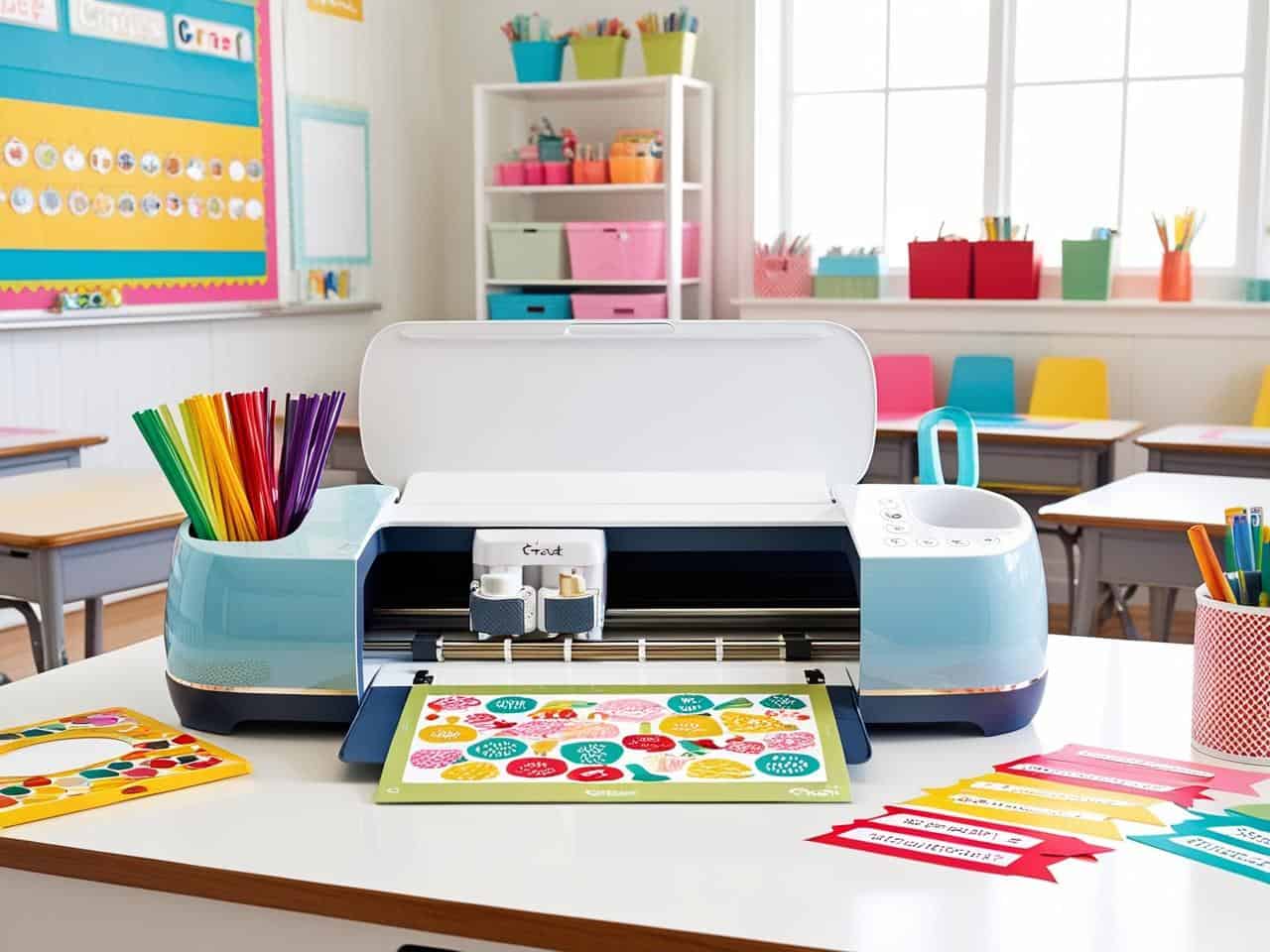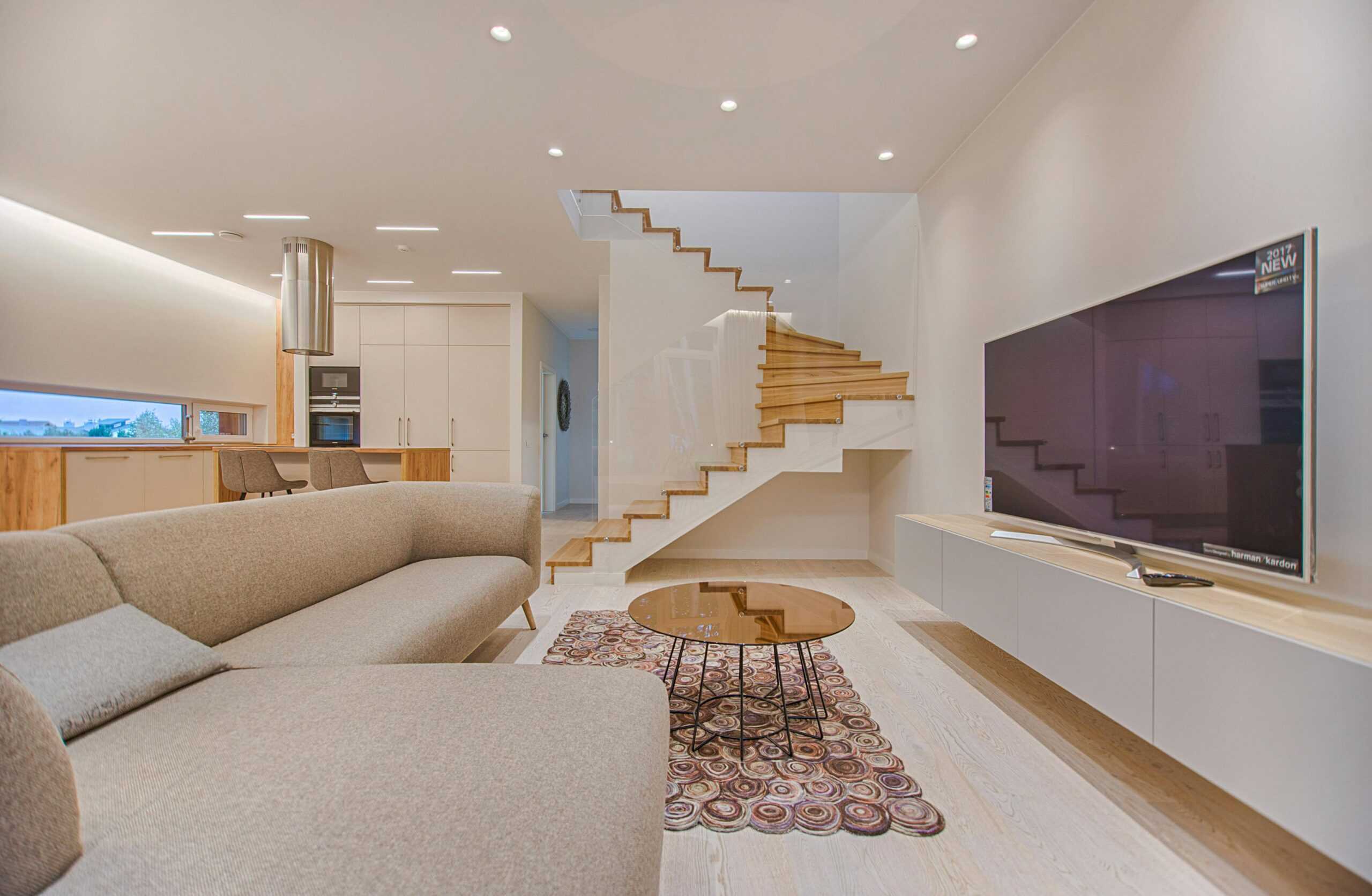Indoor plants have many benefits for you, from purifying the air, improving your moods, and making the room look classy. But, if you need to reap all these benefits, you will need to learn how to arrange plants in any living room or any other room you want to decorate. We show you how in this article.
What You Need to Know About Arranging Indoor Plants
When planting indoor plants, you have several considerations you need to make to achieve a beautiful living room. Different house plants come with different requirements, including light, planters, best fertilizers, watering, and more.
While you know the term indoor plants, do not forget that all plants thrive naturally outdoors. So, when you care for a plant inside your home, you need to observe different rules to keep the plant alive and keep your house mess and pest-free.
Before planting your decorative plants, you need to understand where each plant can thrive. For instance, low-light plants will need to sit in darker areas. However, suppose your house has many windows, thus more light distribution. In this case, you can not invest in low-light plants as they would not thrive.
Besides lighting, you need to understand how high or low maintenance your plants are. Some require frequent watering, pruning, or fertilizers. On the other hand, others can be planted in taller plant pots, others in small pots, while others are trailing plants that need more taming.
You can easily get things mixed up when you're just beginning your house decoration with plants. For this reason, there are a few general rules you need to understand when you arrange indoor plants.
1. Observe the plant size
When getting some indoor plants, you need to understand how big each plant grows. Here is how to arrange plants in any living room according to size.
a) Large plants
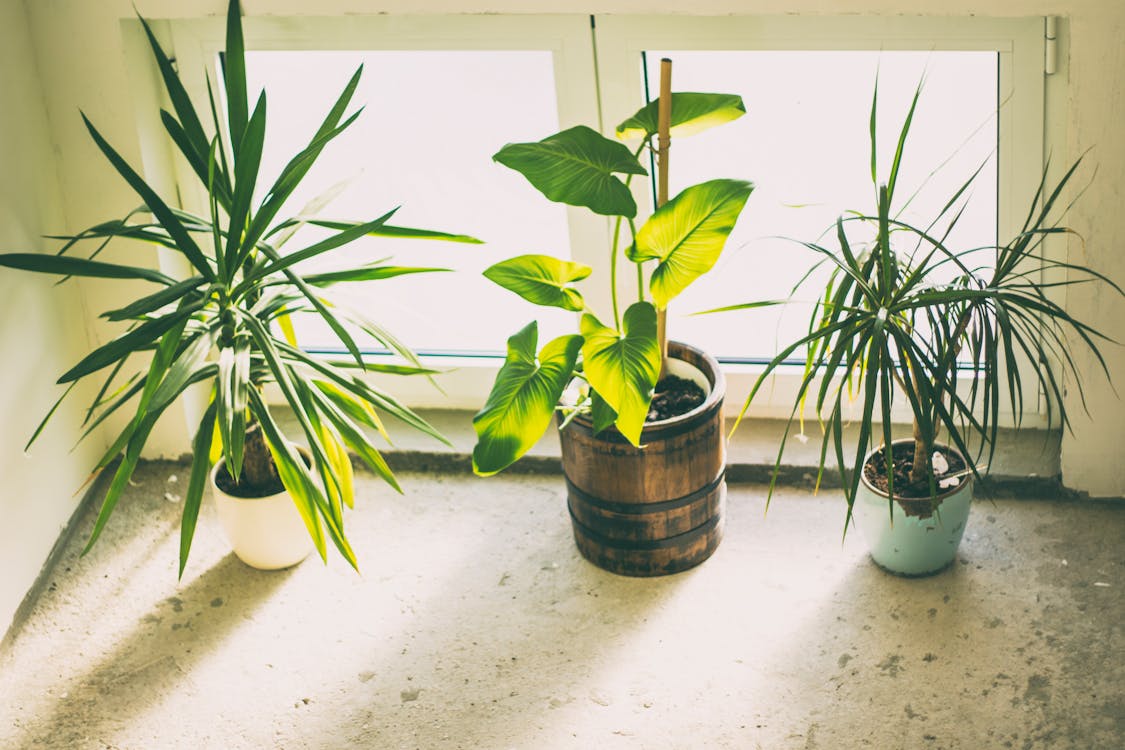
image source: pexels.com
If you have a lot of living room space, you can invest in one or more large plants. Some of the most common large plants you can get include the areca palm, snake plant, umbrella papyrus, and more.
In most cases, these plants look best in large decorative pots. They are low-maintenance potted plants, hence your best bet when you don't spend much time at home. These larger plants may offer the best benefits to your productivity and happiness, but only when you arrange them correctly.
Large plant pots are designed to sit on the ground, so you can place these in;
- awkward corners
- next to a sofa
- next to a window
- next to a non-functional fireplace
When arranging large potted plants, you want to place them to highlight other decorative items like wall art, curtains or windows, and furniture pieces. If you do not want to create focal points with the plants, you can use them to divide rooms.
But, when placing them, ensure you meet their light requirements. For instance, if your plant requires low light to thrive, it is best to avoid arranging plants near big windows.
b) Small potted plants
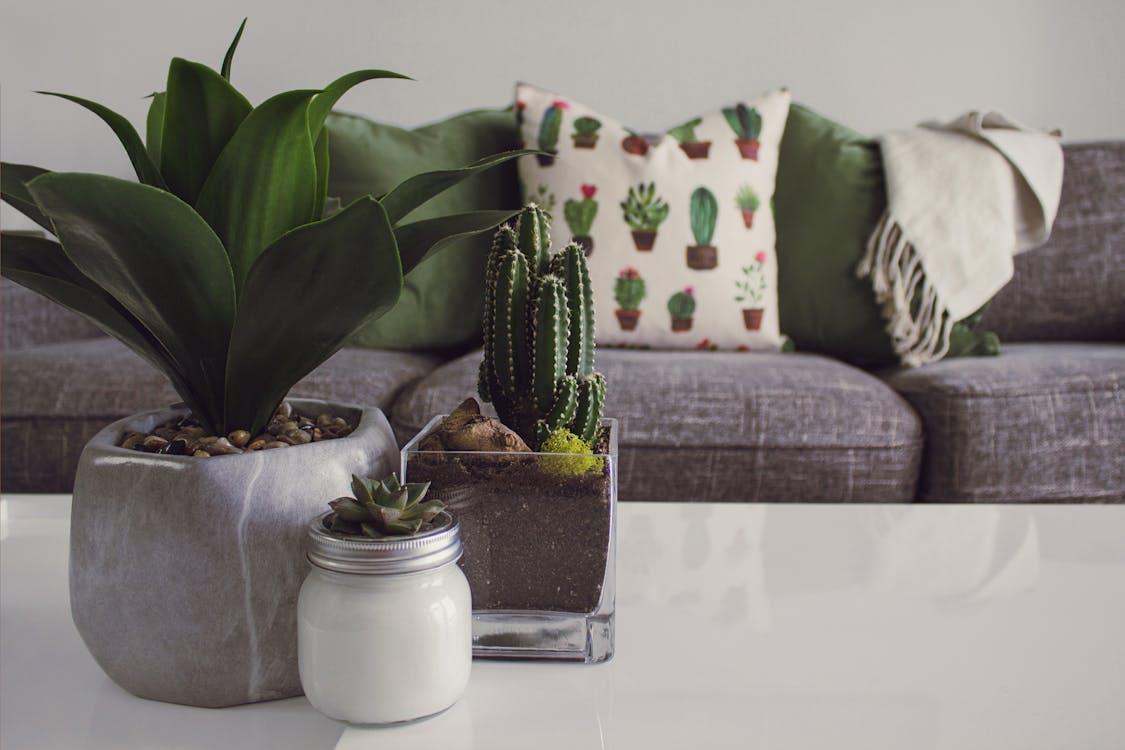
image source: pexels.com
Small plants are great for all room sizes, unlike the larger plants that take up a lot of space. Besides also requiring small decorative pots, the smaller plants sync well with decorative items like pebbles, sand, and more.
Some of the best small plants you can get for your living room include most cacti and succulent plants and the spider plant. You will need to place them where they become the focal points in a room. Here are some places you can arrange your smaller plants.
- on bookshelves or TV units
- on your coffee table
- on your end table
- as hanging plants
When arranging smaller indoor plants, make sure you understand their maintenance requirements. In addition, smaller plants are perfect when you use a plant stand to prevent a mess on your shelves and tables. Finally, you can use different plants and planters to highlight an area for the best results.
2. Observe the visual weight of your plants
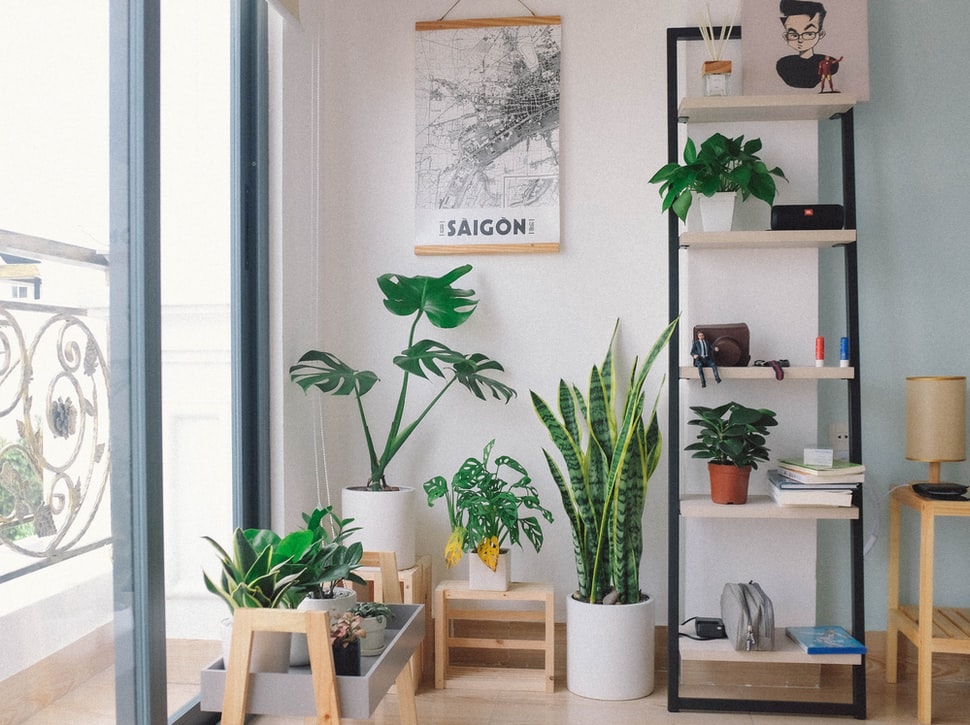
Image source: northeastfactorydirect.com
When improving your living room decor with plants, you need to understand the effect their leaves have when you look at them. The visual weight is also known as the leading line of a plant, and it refers to how the leaves help you interact with a room.
For instance, hanging plants tend to have their leaves facing downward. As a result, when you look at these plants, your attention will automatically go to interesting decor pieces on your floor or below the plants. On the other hand, taller plants like the snake plant draw your attention towards the walls and ceiling.
Therefore, as you learn how to arrange plants in your living room, it is vital to balance the visual appeal. So, understand the areas, art, or furniture pieces you want to highlight with each plant.
3. Observe the plant texture
When you want different indoor plants to improve your living space, it is imperative to understand how different foliage textures can improve the room ambiance. The plant's leaves and stems will help you achieve a full-of-texture room or a minimalistic look once you match the plants with existing furniture.
When you want a minimalistic living room, you need to look for a plant with wand-like stems and fleshy leaves. Alternatively, you can opt for different ferns and cacti. These plants help create a multidimensional look while maintaining your minimalist theme.
On the other hand, if you want a busier house theme, you can look for indoor plants with large, glossy leaves. These plants also work well with lots of layered rugs, blankets, and cushions on your furniture.
4. Observe the rule of three
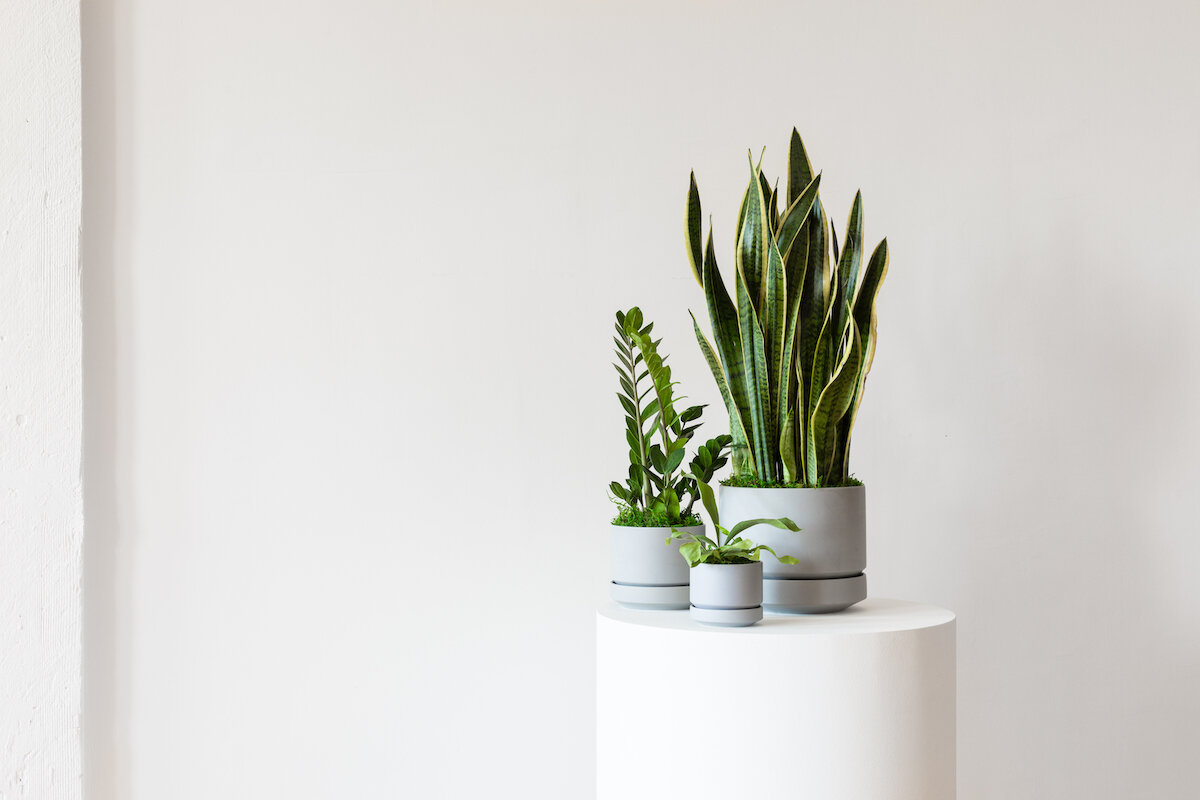
image source: leonandgeorge.com
The rule of three is a method used to group plants inside the house. This rule requires you to use odd numbers; for example, group three plants in the same area rather than two or four. The understanding is that odd numbers allow you to choose all the above factors like texture, height, and even color.
When observing the rule of three, here are the mistakes you will want to avoid;
- Avoid grouping plants with the same texture
- Avoid grouping plants with the same color
- Avoid grouping plants of the same height
However, you do not need to get very different species of indoor plants to achieve your desired living room look. When you group three plants in the same place, you need to find at least one common feature so the plants can look natural together. While you can avoid color, height, and texture, you can look for similar hues and leaf shapes.
5. Observe color
:max_bytes(150000):strip_icc()/5WinterHousePlants_272-fe85fb4f012846469cef45ddbbb94add.jpg)
image source: thespruce.com
In line with the rule of three above, when arranging plants in your living room, look for leaf colors that make their positioning interesting as a focal point. When following the rule of three, look for three plants with different hues. In short, ensure you have a primary color, secondary color, and accent color.
You can choose the tallest plant to have the primary color, while a medium plant comes with a darker or brighter shade compared to the primary color. Finally, the smallest plant can have a contrasting color that also matches the furniture in your room.
When also arranging plants across the entire room, you will need to avoid using the same plant color or species. So, improve your living room decor with differently colored indoor plants for a better ambiance. While you can look for colorful leaves, you can also go for leaves with different patterns that improve visibility.
6. Get colorful pots

imagesource: thejournal.ie
Now that most of your plant considerations are made, you also need to use the right pots and planters. These vessels are as important as the plants you will plant in them. When looking for pots, ensure you get;
- the right size for your plants
- the right color to improve your living room
- the best planting features for drainage and aeration
7. Get the placement right
When you have your plants and pots ready, you now need to ensure you place the plants in places they will survive. You need to decide where the plants will look most appealing and get the best natural light and humidity for survival. Here are some places you can place your decorative indoor plants.
a) On the floor
When you have tall plants, you will want to find the best spot to place their pots on the floor of your living room. In most cases, you can place them next to windows, seats, and below wall decor like art, mirrors, and clocks. Ensure the plants do not conceal furniture or sit next to air vents, fans, heaters, or other electronics.
b) On shelves
You can decorate your shelves with plants for a more welcoming environment. When decorating, ensure you get small potted plants to create a stunning display next to your books, shoes, and electronics.
If you have big shelves, you can look for trailing plants whose stems drape down to below levels where the most interesting items are. Additionally, if you have plants that require a lot of light, you can also use the best LED grow lights that mimic natural light.
c) On aesthetic fireplaces
If you have a fireplace you never use, you can transform it into a focal point of your living room with plants of varying heights and colors. Of course, you will want to keep the tallest plants on the ground level, while smaller indoor plants sit in smaller pots on the upper levels.
d) On an end table
Rather than throw the book you're reading on your end table, you can get a small plant and place it there in a small planter. Additionally, you can add small pebbles into the planter for a classier and cleaner look.
e) On your coffee table
You can also place a small planter with a colorful plant on your coffee table. It is ideal to get plants with fresh, large leaves to create a sense on cleanliness.
f) On your high ceilings
It is hard to decorate from the ground up when you have high ceilings. Therefore, you can turn to hanging planters that bring more visibility to the ground. If looking to create this type of green oasis, you may want to plant these new plants closer to a window for natural light.
Then, if you get high-maintenance plants, ensure you can easily water them and prune them if need be.











